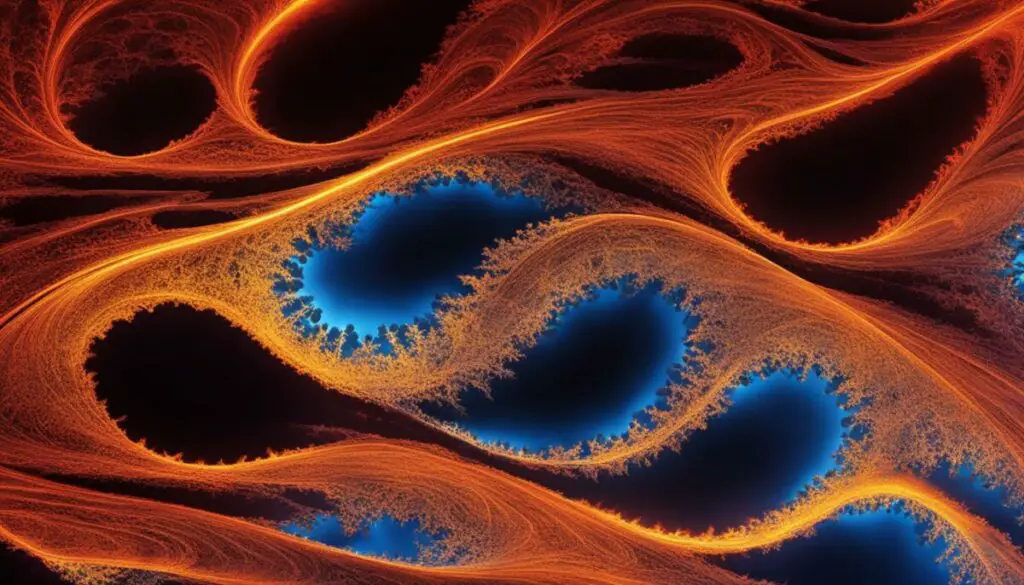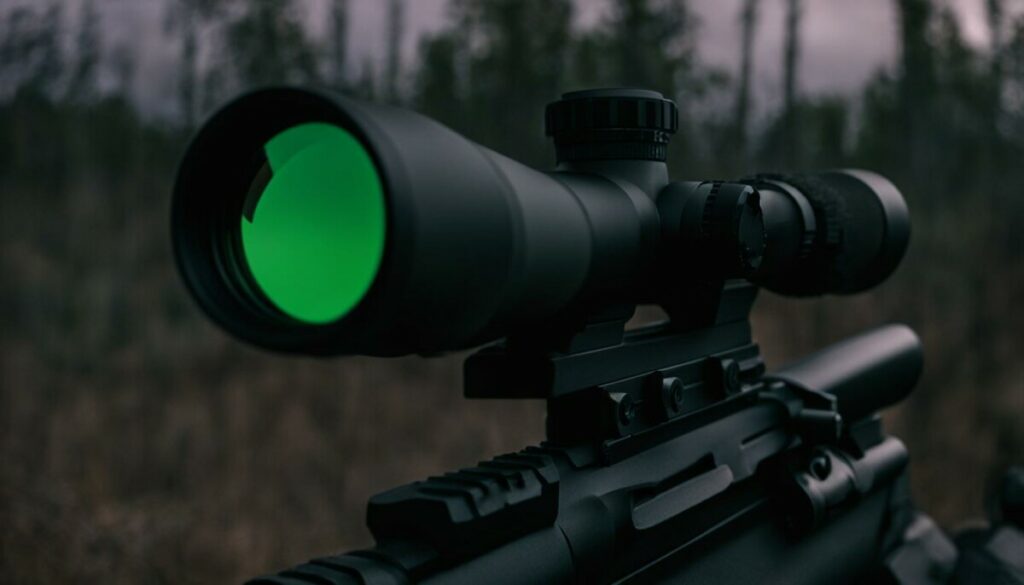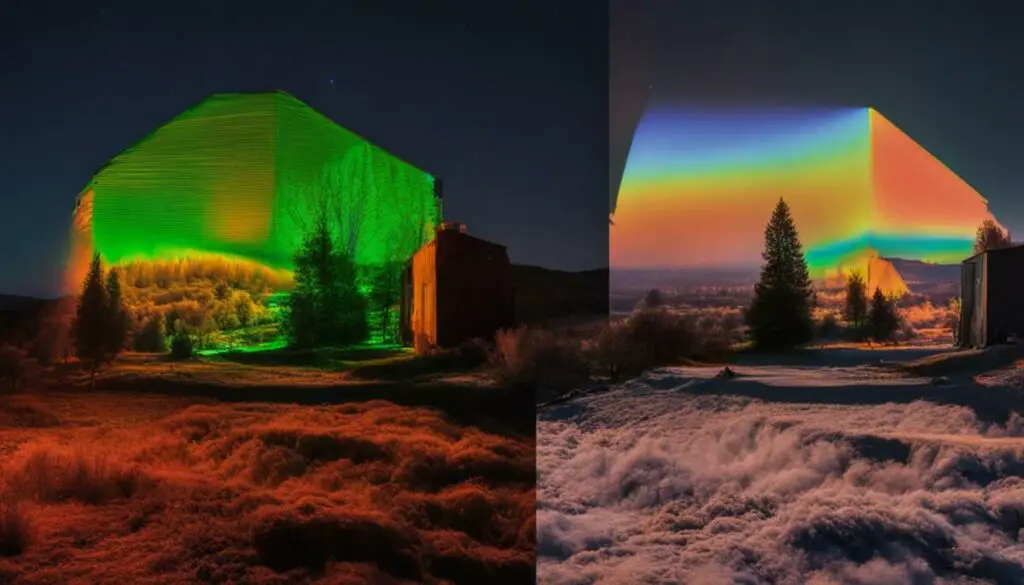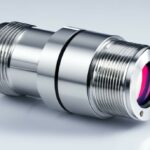Last Updated on 6 months by Francis
Welcome to our comprehensive guide on understanding the difference between infrared and thermal technologies. In this article, we will shed light on these two terms that are often used interchangeably but actually have distinct meanings. Are they truly the same or are there subtle nuances that set them apart? Let’s dive in and unravel the mystery!
Contents
Key Takeaways:
- Although often used interchangeably, infrared and thermal are not the same.
- Infrared refers to a specific range of the electromagnetic spectrum, while thermal relates to heat generation and emission.
- Infrared technology utilizes the detection and measurement of infrared radiation.
- Thermal technology focuses on the measurement and manipulation of heat.
- Understanding the distinctions between these technologies is crucial for various applications, including security, surveillance, and industrial inspections.
Understanding Radiation: A Broad Definition

In this section, we will delve into the broader definition of radiation, beyond its association with nuclear reactors and radioactive waste. We will explore the various types of radiation, including alpha rays, beta rays, and gamma rays, which result from nuclear decay. Furthermore, we will discuss how all forms of light, including gamma rays, visible light, microwaves, and infrared, are types of radiation. This section will establish the connection between radiation and different forms of light, laying the groundwork for understanding infrared and thermal technologies.
Radiation is a term often associated with nuclear radiation and its potential harmful effects. However, radiation is not limited to this narrow context. In fact, radiation encompasses a wide range of phenomena, including electromagnetic radiation, which includes types of light such as gamma rays, visible light, microwaves, and infrared. These different forms of radiation are all connected through the fundamental properties of light and its interaction with matter.
Gamma rays, the highest energy form of radiation, are typically emitted during nuclear decay processes. They have the shortest wavelengths and can penetrate through most materials. Visible light, on the other hand, is the form of radiation that our eyes are sensitive to, with various colors corresponding to different wavelengths. Microwaves, commonly used in household appliances, have longer wavelengths and are often associated with heating food. Lastly, infrared radiation, also known as heat radiation, is characterized by longer wavelengths than visible light and is responsible for the warmth we feel from sources like the sun or a fireplace.
So, in essence, all forms of light, including gamma rays, visible light, microwaves, and infrared, are types of radiation. They may differ in their energy levels, wavelengths, and effects on matter, but they are all part of the electromagnetic spectrum and can be described as different manifestations of the same fundamental phenomenon – radiation.
Table: Types of Radiation
| Type of Radiation | Wavelength Range | Common Sources |
|---|---|---|
| Gamma Rays | Shortest wavelength | Nuclear decay processes |
| Visible Light | 400 to 700 nanometers | Sunlight, light bulbs |
| Microwaves | 1 millimeter to 1 meter | Microwave ovens, communication devices |
| Infrared | 700 nanometers to 1 millimeter | Heat sources, thermal imaging |
Exploring Thermal Radiation: An Introduction to Heat Emission

In this section, we will focus on thermal radiation, an essential aspect of heat emission. Thermal radiation refers to the heat emitted by objects and organisms, and it plays a crucial role in our understanding of temperature and energy transfer. To grasp the concept of thermal radiation, we must first recognize it as a form of electromagnetic radiation. Unlike other types of electromagnetic radiation, such as visible light or microwaves, thermal radiation is not dependent on ambient light. It is directly linked to an object’s temperature, making it a valuable tool in various fields.
One key characteristic of thermal radiation is that it is emitted by objects that have a temperature above absolute zero. This means that even objects at room temperature constantly emit thermal radiation. The amount and wavelengths of radiation emitted are determined by the object’s temperature. The relationship between temperature and thermal radiation follows a fundamental principle known as black-body radiation. Understanding black-body radiation helps us comprehend how thermal radiation varies for different objects and temperature levels.
Overall, this section will provide an introductory understanding of thermal radiation and its relationship to heat emission. By exploring the basic principles of thermal radiation, we will lay the groundwork for comprehending the capabilities and applications of thermal imaging technology, which relies on the detection and visualization of this unique form of radiation.
The Relationship between Temperature and Thermal Radiation
When it comes to thermal radiation, temperature variation is a crucial factor that impacts the emitted energy. The temperature of an object determines the intensity and wavelengths of the thermal radiation it emits. As the temperature of an object increases, so does the amount of radiation it emits. This phenomenon is demonstrated by the Stefan-Boltzmann law, which states that the total power radiated by a black-body object is proportional to the fourth power of its temperature.
Furthermore, the specific wavelengths of thermal radiation emitted by an object are determined by its temperature. Objects at higher temperatures emit shorter wavelengths, which are associated with higher energy levels. This principle, known as Wien’s displacement law, allows us to determine an object’s temperature based on the peak wavelength of its thermal radiation.
In summary, by understanding the relationship between temperature and thermal radiation, we gain insights into how heat emission occurs and the factors that influence it. This knowledge forms the foundation for exploring thermal imaging technology and its applications in various fields.
Unraveling Thermal Imaging: Detection of Heat Signatures

Thermal imaging is a remarkable technology that utilizes the detection of infrared radiation to visualize temperature variations. Unlike traditional cameras that rely on visible light, thermal cameras capture the heat signatures emitted by objects and convert them into a visible image. This enables us to see and understand the distribution of heat in a given scene, even in total darkness or low-light conditions.
The key advantage of thermal imaging lies in its ability to detect temperature variations, making it valuable in a wide range of applications. For example, in security and surveillance, thermal cameras can identify hidden objects or individuals, providing an additional layer of protection. The heat signatures emitted by living beings, such as humans or animals, stand out prominently, allowing for quick and accurate identification.
Furthermore, thermal imaging proves particularly effective in search and rescue missions. Its capability to detect heat signatures can aid in locating missing persons or survivors in challenging environments, such as dense forests or disaster sites. The ability to detect differences in temperature can help rescuers navigate through smoke, fog, or dust, providing critical information for successful operations.
Industrial inspections also benefit from thermal imaging technology. By capturing and analyzing temperature variations in machinery or electrical systems, potential malfunctions or failures can be identified early on, preventing costly downtime and ensuring safety. Additionally, thermal imaging assists in identifying energy inefficiencies in buildings by visualizing heat loss or insulation issues, making it a valuable tool for energy audits and optimizing energy consumption.
Table: Applications of Thermal Imaging
| Industry | Applications |
|---|---|
| Security and Surveillance | Identifying hidden objects or individuals, enhancing perimeter protection |
| Search and Rescue | Locating missing persons or survivors in challenging environments |
| Industrial Inspections | Identifying potential malfunctions or failures in machinery or electrical systems |
| Energy Audits | Visualizing heat loss or insulation issues in buildings |
Thermal imaging technology continues to advance, with new developments improving image quality, sensitivity, and affordability. As a result, its applications are becoming increasingly widespread and accessible across various industries. Whether it’s enhancing security, aiding in search and rescue operations, or optimizing industrial processes, thermal imaging proves to be a valuable tool for detecting heat signatures and visualizing temperature variations.
Understanding Night Vision: Amplifying Existing Light

When it comes to enhancing vision in low-light conditions, night vision technology plays a vital role. By amplifying existing ambient light, night vision devices allow users to see clearly even when visibility is limited. This technology utilizes image intensifier tubes to enhance the small amount of available light and convert it into visible images.
Unlike thermal imaging, which detects heat signatures, night vision relies on the amplification of light. It is particularly useful in situations where there is some ambient light present, such as a moonlit night or urban areas with streetlights. However, it is important to note that night vision devices have limitations in total darkness when ambient light is scarce.
With the ability to provide detailed imagery in low-light conditions, night vision technology has found applications in various fields. Military operations often utilize night vision goggles to aid soldiers in navigating and identifying potential threats during nighttime missions. Additionally, law enforcement agencies use night vision equipment for surveillance and tactical operations in low-light environments. Night vision is also popular among outdoor enthusiasts, providing a valuable tool for activities such as camping, hunting, and wildlife observation.
Advantages of Night Vision:
- Enhances vision in low-light conditions
- Allows users to see clearly in low-visibility environments
- Useful in situations with some ambient light present
- Widely used in military, law enforcement, and outdoor activities
Limitations of Night Vision:
- Requires some ambient light to operate effectively
- Not suitable for use in total darkness
- May experience reduced performance in extremely low-light conditions
- Less effective in situations with heavy fog or smoke
Despite its limitations, night vision technology continues to evolve, with advancements in image intensifier tubes and digital imaging systems. This allows for improved clarity and performance in challenging low-light environments. Night vision remains a valuable tool in various applications, providing enhanced vision and improving safety and situational awareness in conditions where human eyesight alone may fall short.
Comparing Thermal Imaging and Night Vision: Advantages and Limitations

When it comes to enhancing vision in low-light conditions, both thermal imaging and night vision technologies play crucial roles. While they share the common goal of improving visibility, there are distinct differences between the two. Let’s explore the advantages and limitations of thermal imaging and night vision, and understand how they serve unique purposes in various applications.
Advantages of Thermal Imaging
Thermal imaging excels in total darkness, as it does not rely on ambient light to operate effectively. By detecting heat signatures emitted by objects, thermal cameras can provide clear images even in smoke, fog, or dust-filled environments. This makes thermal imaging an invaluable tool for applications such as security, surveillance, search and rescue, and industrial inspections. Whether it’s identifying potential intruders or detecting hidden objects, thermal imaging can provide unmatched visibility in challenging conditions.
Limitations of Night Vision
Night vision, on the other hand, amplifies existing ambient light to enhance vision in low-light conditions. While it is effective in scenarios where there is some light available, night vision devices struggle in total darkness. They heavily rely on ambient light sources, and in the absence of sufficient light, their effectiveness diminishes. This limitation makes night vision less suitable for applications that require visibility in pitch-black environments. However, in situations where there is residual light, night vision can still provide a significant advantage by amplifying that light and making the surroundings more visible.
| Thermal Imaging | Night Vision |
|---|---|
| Works in total darkness | Requires ambient light |
| Can detect heat signatures | Amplifies existing light |
| Effective in smoke, fog, and dust | Less effective in these conditions |
| Used in security, surveillance, search and rescue, industrial inspections | Commonly used in military operations |
In summary, thermal imaging and night vision technologies have their own distinct advantages and limitations. Thermal imaging performs exceptionally well in total darkness, detecting heat signatures and cutting through environmental obstacles. Night vision, on the other hand, relies on existing light sources to amplify visibility in low-light conditions but struggles in pitch-black environments. Understanding these differences is crucial in choosing the right technology for specific applications and maximizing visibility in challenging situations.
Applications of Thermal Imaging and Night Vision: Revolutionizing Vision in Low-Light Conditions
In recent years, thermal imaging and night vision technologies have been widely adopted across various industries for their groundbreaking applications in low-light conditions. These technologies have revolutionized the way we see and perceive our surroundings, enabling us to navigate and operate effectively even in the darkest environments.
Applications of Thermal Imaging
Thermal imaging has found significant use in the fields of security and surveillance. By detecting heat signatures, thermal cameras can identify potential intruders or hidden objects that may be invisible to the naked eye. This capability has proven invaluable in protecting critical infrastructure, preventing unauthorized access, and ensuring public safety.
Thermal imaging is also instrumental in search and rescue missions. In challenging environments such as dense forests or remote terrains, thermal cameras can quickly locate individuals in distress, even during nighttime or adverse weather conditions. This has significantly improved response times and enhanced the chances of successful rescues.
Furthermore, thermal imaging plays a crucial role in industrial inspections. By detecting variations in temperature, it can identify potential equipment malfunctions, overheating components, or energy inefficiencies. This technology is particularly useful in industries such as manufacturing, energy, and electrical maintenance, where early detection of abnormalities can help prevent costly downtime and ensure operational efficiency.
Applications of Night Vision
Night vision technology has been widely adopted in various sectors, including military operations. By amplifying existing ambient light, night vision devices provide soldiers with enhanced visibility in low-light conditions, enabling them to navigate and operate with increased efficiency and effectiveness. This technology has been invaluable in nocturnal missions, surveillance, and target acquisition.
In addition to military applications, night vision technology has found use in wildlife observation. Researchers and enthusiasts can observe and study nocturnal animals without disturbing their natural behavior. This has led to valuable insights into the behavior and habits of elusive species, contributing to conservation efforts and ecological research.
Both thermal imaging and night vision have become indispensable tools in enhancing vision in low-light conditions across a wide range of applications. From security and surveillance to search and rescue, industrial inspections, and military operations, these technologies have transformed our ability to see and perceive our surroundings in ways previously unimaginable.
The Role of Infrared Radiation in Daily Life
Infrared radiation, a form of electromagnetic radiation with longer wavelengths than visible light, plays a significant role in numerous applications in our daily lives. From the convenience of our TV remotes to the advanced technology used in various industries, infrared radiation offers a wide range of functionalities and benefits.
One of the most common applications of infrared radiation is found in remote controls. Whether it’s changing channels on your TV or adjusting the temperature on your air conditioner, infrared technology enables us to control devices from a distance. By emitting infrared signals, these remotes transmit commands to the respective devices, making our lives more convenient and comfortable.
But the use of infrared radiation goes beyond remote controls. Infrared technology has made significant contributions to astronomy, allowing scientists to explore distant celestial objects. Infrared telescopes capture the heat emitted by stars and galaxies, providing valuable insights into their composition, temperature, and even the presence of certain gases. This technology has revolutionized our understanding of the universe and continues to push the boundaries of astronomical research.
In the field of medicine, infrared radiation finds applications in various diagnostic and therapeutic procedures. Infrared cameras and thermography are used to detect abnormal heat patterns in the body, aiding in the early detection of diseases such as breast cancer and musculoskeletal injuries. Additionally, infrared-based therapies, like infrared saunas, are utilized for relaxation, detoxification, and pain relief.
In the realm of consumer devices, infrared technology has become an integral part of our everyday lives. From proximity sensors in smartphones that detect when the device is held close to the face, to motion sensors in video game consoles that track our movements, infrared contributes to enhanced user experiences and intuitive interactions.
In conclusion, infrared radiation plays a crucial role in our daily lives, offering a wide range of applications and benefits. From the convenience of remote controls to advancements in astronomy, medicine, and consumer devices, infrared technology continues to shape and improve our modern world.
Conclusion
Infrared and thermal technologies play a significant role in enhancing vision in low-light conditions and revolutionizing various industries. Throughout this article, we have explored the differences between these two technologies and their unique characteristics.
Thermal imaging, with its ability to detect heat signatures and operate in total darkness, offers advantages in applications such as security, surveillance, search and rescue, and industrial inspections. On the other hand, night vision technology amplifies existing ambient light to enhance visibility in low-light conditions, but it has limitations in total darkness.
It is important to recognize the widespread use of infrared radiation in our daily lives, from TV remotes to consumer devices. The diverse applications of infrared technology in astronomy, military operations, medicine, and more highlight its significance in modern society.
In conclusion, both infrared and thermal technologies have their place in enhancing vision in low-light conditions. Understanding their differences and applications allows us to harness their potential for a range of industries, making our lives safer and more efficient.
FAQ
Is infrared the same as thermal?
No, infrared and thermal are related concepts but not the same. Infrared refers to a range of electromagnetic radiation, while thermal refers to the heat emitted by objects and organisms.
What is the difference between infrared and thermal?
Infrared is a type of electromagnetic radiation, while thermal is the heat emitted by objects. Infrared radiation can be used to detect temperature variations and capture heat signatures, while thermal radiation is the actual heat being emitted by an object.
What is the difference between infrared and thermal imaging?
Infrared refers to a range of electromagnetic radiation, while thermal imaging is a technology that uses the detection of infrared radiation to visualize temperature variations. Infrared is the phenomenon, while thermal imaging is the application of that phenomenon.
How does thermal imaging work?
Thermal imaging works by capturing the infrared radiation emitted by objects and converting it into visible images. Thermal cameras can detect heat signatures and create a thermal map based on temperature variations.
What is night vision?
Night vision is a technology that amplifies existing ambient light to enhance vision in low-light conditions. It uses image intensifier tubes to amplify the available light and convert it into visible images.
What are the advantages of thermal imaging?
Thermal imaging excels in total darkness as it does not rely on ambient light sources. It can detect heat signatures and see through smoke, fog, and dust, making it useful in various applications such as security, surveillance, search and rescue, and industrial inspections.
What are the limitations of night vision?
Night vision performs best when there is some ambient light available. In total darkness, it may not provide clear vision as it heavily relies on ambient light sources.
What are the practical uses of thermal imaging and night vision technologies?
Thermal imaging is used in security and surveillance to detect suspicious activities, in search and rescue missions to navigate challenging environments, and in industrial inspections to identify hidden objects. Night vision enhances vision in low-light conditions and is used in military operations, wildlife observation, and various consumer devices.
What are the applications of infrared radiation in daily life?
Infrared radiation is used in TV remotes, astronomy, military operations, medicine, and consumer devices. It has a wide range of applications in our modern world.









